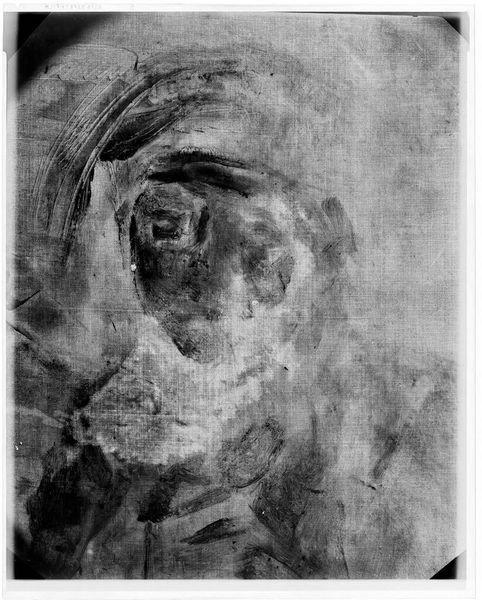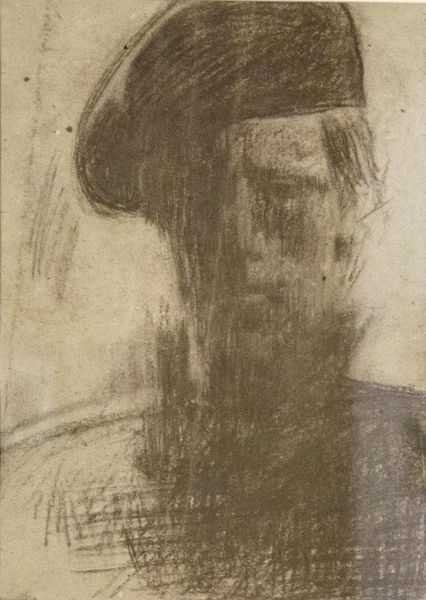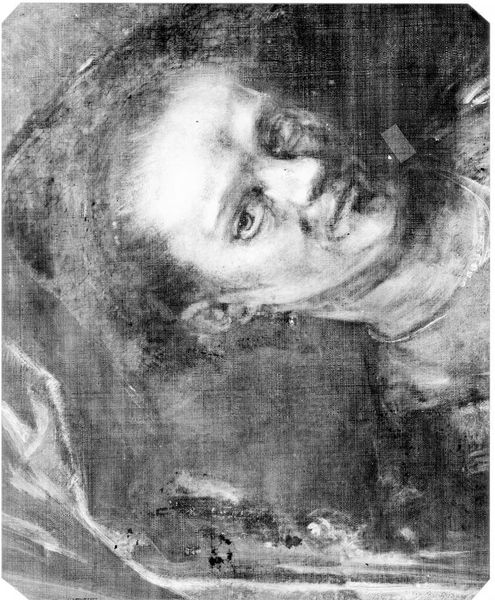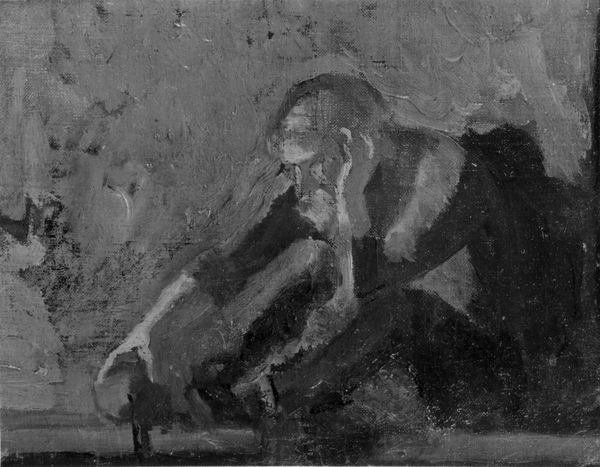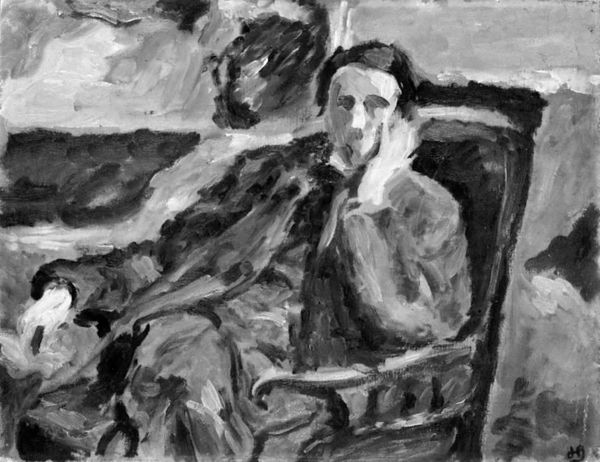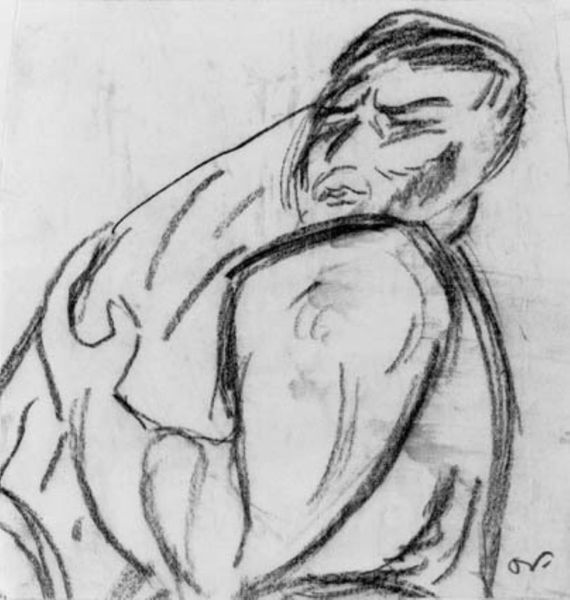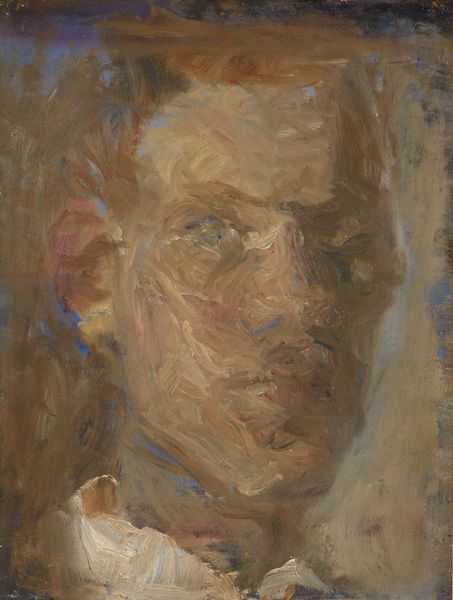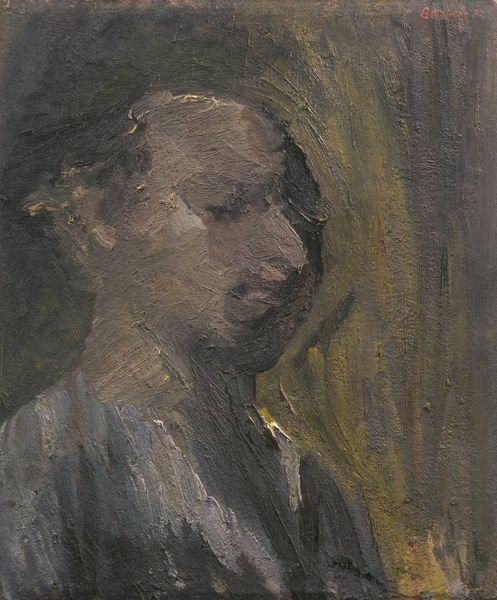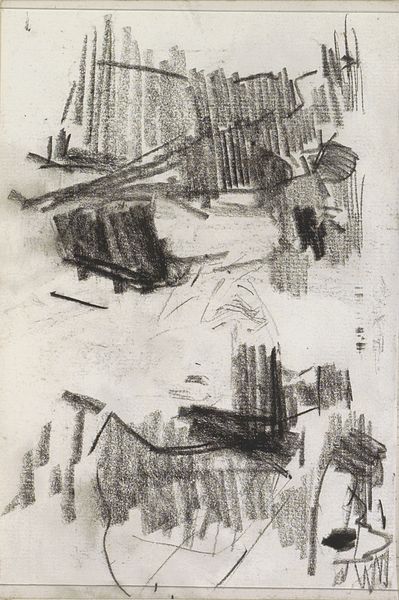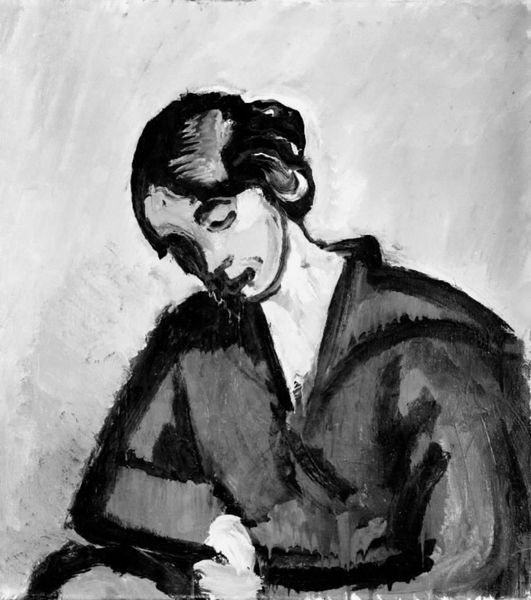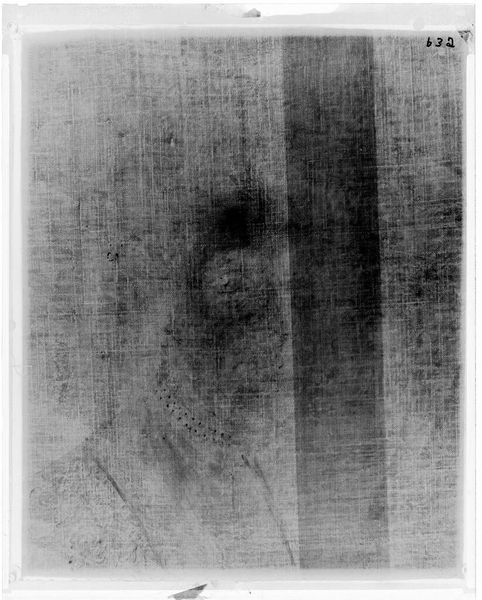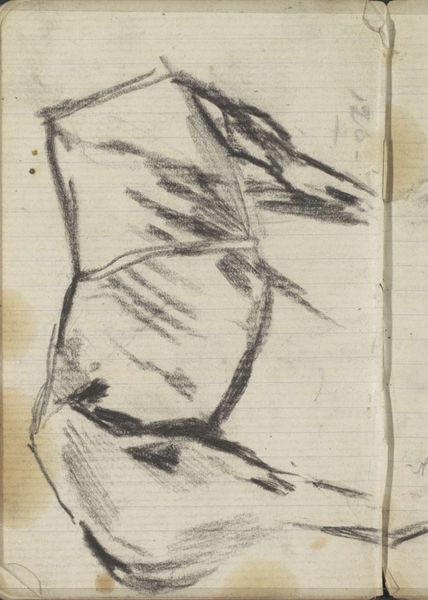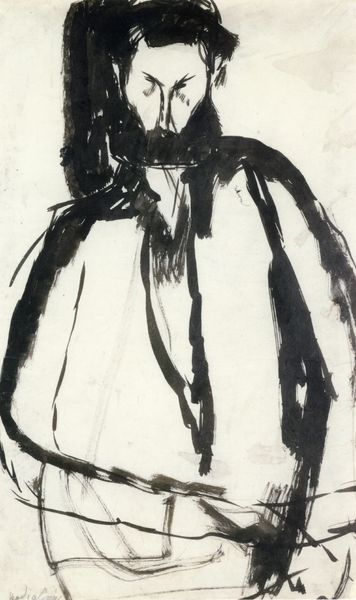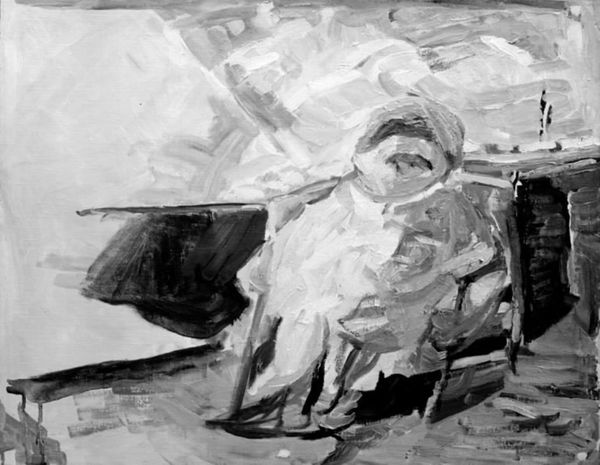
painting, oil-paint, canvas, impasto, wood
#
portrait
#
painting
#
oil-paint
#
canvas
#
impasto
#
expressionism
#
wood
#
monochrome
#
monochrome
Dimensions: 31.5 cm (height) x 22 cm (width) (Netto)
Curator: It’s remarkable how portraiture, even in its most minimal form, can hold such power. This one, crafted in 1908, is titled "The Painter Edvard Weie," and it’s attributed to Kristian Kongsbøll. It's executed in oil on canvas with expressive impasto. What's your immediate impression? Editor: Somber, stark even. It feels like peering through a fog, struggling to define a face. It’s this interesting mix of hidden and revealed; the paint almost becomes a veil. Curator: I find that darkness rather appropriate. Historically, monochrome has been used to evoke a sense of timelessness or to focus attention solely on form and psychological presence. We often associate it with early photography, mimicking the stark reality of capturing a person's likeness. The restricted palette really concentrates the gaze. Editor: It definitely does. It strips away the distractions of color, and you're left with raw emotion, almost brutal honesty. But the rough texture too…you can practically feel Kongsbøll’s urgency, each stroke a revelation of character or a struggle to grasp it. Is the rough texture expressionistic? Curator: Absolutely. Expressionism often employs distortion and exaggeration to convey inner feelings, to make the subjective visible. The portrait certainly possesses elements consistent with Expressionism's ethos; the impasto application conveys an intensity, like a sculptor almost attacking the canvas. It pushes beyond mere representation and delves into a world of felt experience, making the work more subjective. Editor: The painter Edvard Weie really had quite the gaze—or is that Kongsboll's inner vision? Curator: Kongsbøll seems more preoccupied with essence, and raw expression, foregoing minute, mimetic details to express and embody emotion. The portrait has some elements reminiscent of a symbolic echo. Editor: An interesting point—the monochrome rendering acts as a powerful cultural signifier. Curator: And the expressionistic brushstrokes… They remind me that we are dealing not with a mirror but with an interpretation. Editor: Definitely! Looking at it has shifted something in me. I now see it not as a simple portrait, but as a study in the elusive nature of perception itself. Curator: Indeed, it seems these qualities speak not just about the person represented, but about painting's transformative powers of reflection.
Comments
No comments
Be the first to comment and join the conversation on the ultimate creative platform.
